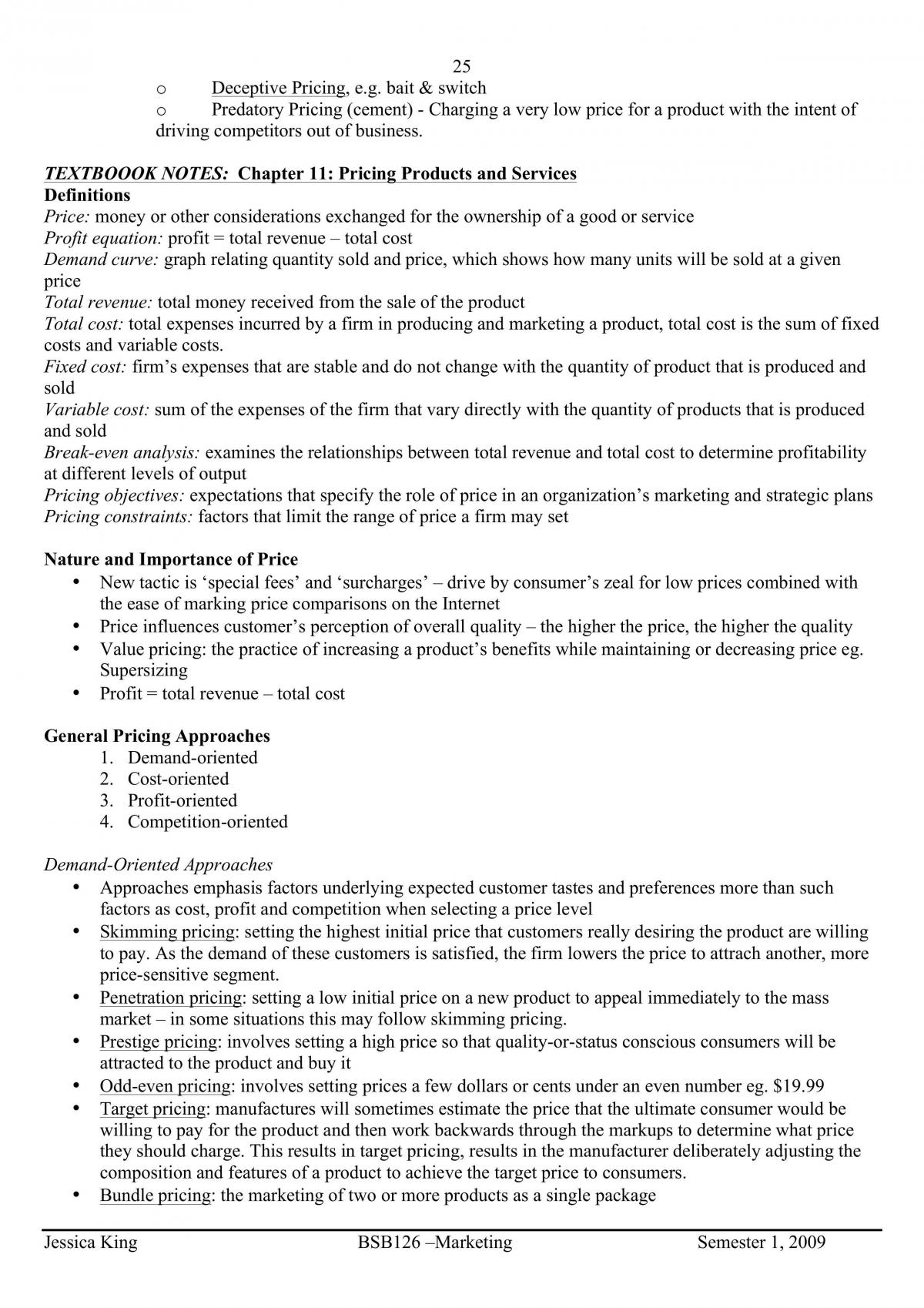Find
Search for over 200,000 study notes and past assignments!
Swap
Download study resources by swapping your own or buying Exchange Credits.
Study
Study from your library anywhere, anytime.
1 Found helpful • 50 Pages • Complete Study Notes • Year: Pre-2021
LECTURE 2: SEGMENTATION LECTURE NOTES What is the most important choice that a company makes? • Choice shapes the business eg. Who are you selling to/who is your target market – ensure it fits with the marketing concept • Evolution from mass and product variety marketing (a different range eg. Colours, shape) due to new innovations • Product changes due to competition, consumer taste and technology improvements • Marketing targeting – focus on the customer need • Vertical integration – drive down costs to ensure a larger profit Market Segmentation Market Segmentation is the process of dividing the total market for a good or service into several smaller, internally homogeneous groups • Why segmentation is necessary: - Differences in buying habits - Differences in the way goods/services are used - Different motives for buying - In competitive markets, it is dangerous to treat all customers the same • Ideal is ‘one-to-one’ marketing – selling to one person at a time • Typically 2-12 is the market segment for most companies Markets are segmented by: • Intuition based on experience and judgement • Mimicking competitors and earlier market entrants • Performing an analysis: identifying current and potential wants – identifying characteristics that distinguish segments – determining who has each want A useful segmentation process must meet 5 criteria: 1. Potential for increased profit ie. extra costs such as production, advertising (x amount of different types are needed), distribution all go up – economies of scale 2. Similarity of needs of buyers within a segment eg. Product features wanted 3. Difference of needs of buyers among segments 4. Potential of a marketing action to reach a segment eg. Not just TV but radio or a letter drop – depending on the target market/demographics 5. Simplicity and cost of identifying and assigning buyers to segments Not every business should segment the market – most but NOT all should. Most basic market segmentation divides into: • Ultimate consumers: those who use it for themselves/in the home • Business users: those who use it in their businesses, to make other products or to resell it Example Market Segmentations Beer 1. Age 2. Gender 3. Occupation Hotels 1. Star rating 2. Price 3. Location Consumer markets are commonly further segmented on the basis of: • Geography • Demographics • Psychographics • Buying behaviour These are the most significant factors! Geographic Segmentation • Divides the market based upon the geographic distribution of the population • Regional distribution eg. Europe, Asia as they tend to share the same values • Urban, suburban and rural distribution ie. to suit the needs of an urban customer will be different than that of a rural customer Demographic Segmentation • Uses the vital statistics that describe a population eg. Age, social class, ethnicity Psychographic Segmentation • Examining attributes related to how a person thinks, feels and behaves. • Approaches are typically based on personality, values, lifestyle and interests Behavioural Segmentation • Used to segment the market based upon product-related behaviour • Common bases are: - Benefits desired - Product usage rate eg. Nonusers, light, medium, heavy - 80/20 rule: 80% of profits are made by 20% of the customers Business markets are often segmented on the basis of: • customer location • type of business customer ie. industry, size In targeting, when selecting a segment to pursue, a company can follow one of 3 broad strategies: 1. market aggregation: every customer ie no segmentation at all. Employ product differentiation 2. single-segment concentration: focus on one segment or a niche market eg. Ferrari 3. multiple-segment segmentation: (most businesses are in this category) select two or more segments and devise marketing mixes for each Guidelines in selecting a target market • market size – large size = more attractive • expected growth • number and size of competition is minimal • cost of reaching the segment – is it effective • opportunity must be compatible with the company’s resources and objectives Roy Morgan Values Segments • allows you/business to know more about the target market and their interests and needs. Therefore, marketers are better able to suit the customer needs • Example: customer is always looking for a deal. Therefore retail staff is taught to make a ‘deal’ despite the retail price on the shelf. Positioning • The way a firm’s product, brand or organisation is viewed relative to the completion • There are 3 steps in the positioning process 1. Selecting the positioning concept 2. Design the feather that most effectively conveys position 3. Coordinate marking mix components to convey a consistent position • Once company is identified to a niche – the company has to stick to it! • Only 1 concept/idea can be put in a 30 second commercial and therefore it is ideal for the company to focus entirely on one key concept or idea Essence of market segmentation and marketing • In the willingness to not serve certain customers needs/wants – the ability to say No to a certain market • “The essence of positioning is sacrifice. Yu must be willing to give something up in order to establish that unique position.” • Eg. Nike choose athletes with attitude/who are rebellious to cater to their youth-oriented target market • Companies must be a choice – otherwise your brand is bland to all consumers Demand forecasting entails estimating sales of a product during some time in the future. Key Concepts/Ideas • The concepts of market segmentation, targeting and positioning • The process of market segmentation • Bases for segmenting consumers and business markets • Target-market strategies • Methods of forecasting demand TEXTBOOK NOTES: Chapter 8 Identifying Market Segments and Targets Definitions
This document is 25 Exchange Credits
More about this document:
|
|
This document has been hand checkedEvery document on Thinkswap has been carefully hand checked to make sure it's correctly described and categorised. No more browsing through piles of irrelevant study resources. |
|
|
This is a Complete Set of Study NotesComplete Study Notes typically cover at least half a semester’s content or several topics in greater depth. They are typically greater than 20 pages in length and go into more detail when covering topics. |
|
|
What are Exchange Credits?Exchange Credits represent the worth of each document on Thinkswap. In exchange for uploading documents you will receive Exchange Credits. These credits can then be used to download other documents for free. |
|
|
Satisfaction GuaranteeWe want you to be satisfied with your learning, that’s why all documents on Thinkswap are covered by our Satisfaction Guarantee. If a document is not of an acceptable quality or the document was incorrectly described or categorised, we will provide a full refund of Exchange Credits so that you can get another document. For more information please read Thinkswap's Satisfaction Guarantee. |

Studying with Academic Integrity
Studying from past student work is an amazing way to learn and research, however you must always act with academic integrity.
This document is the prior work of another student. Thinkswap has partnered with Turnitin to ensure students cannot copy directly from our resources. Understand how to responsibly use this work by visiting ‘Using Thinkswap resources correctly’.
Browse QUT Subjects




